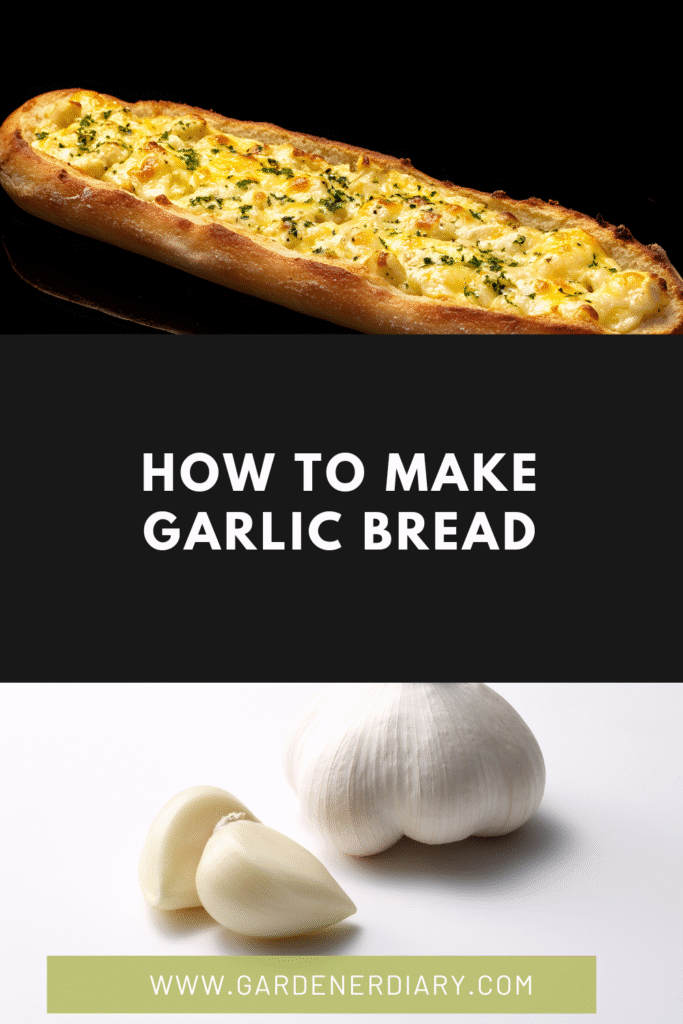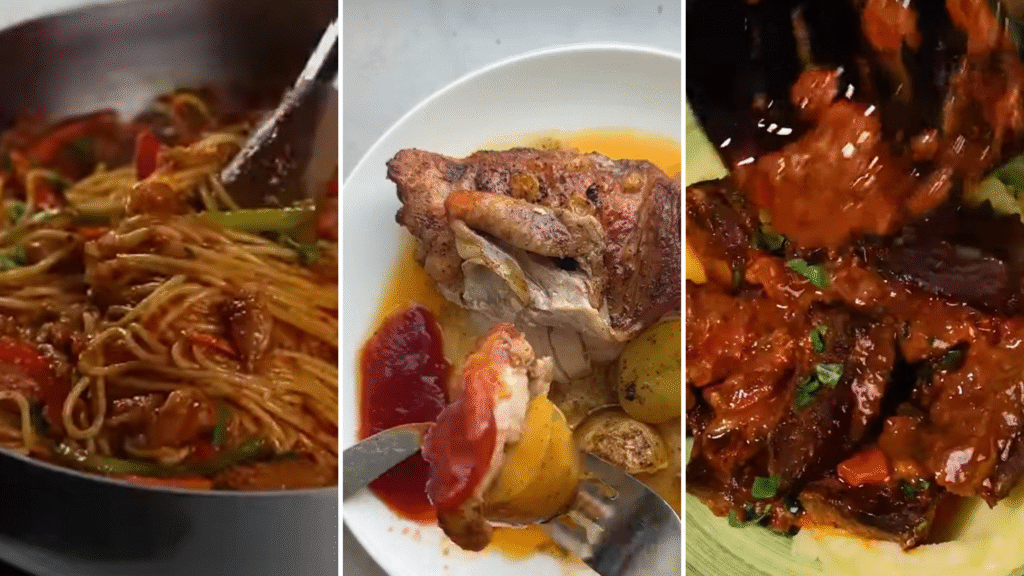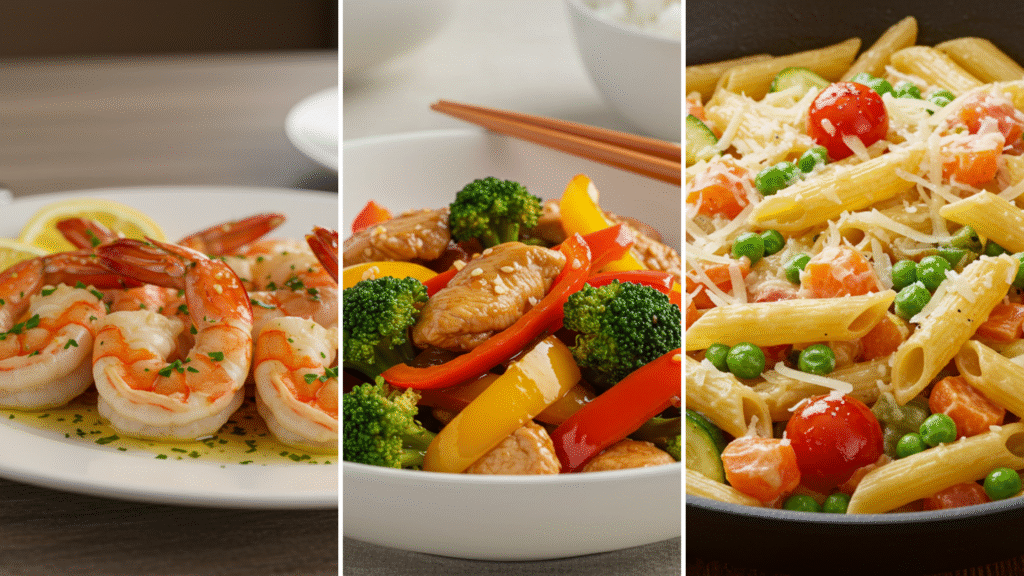Garlic bread is one of those timeless comfort foods that never fails to impress. Warm, crispy on the outside, soft on the inside, and infused with the irresistible aroma of garlic and butter — it’s a side dish that pairs beautifully with pasta, soups, stews, and grilled meats. Whether you want the classic Italian-American style with crusty bread and buttery garlic spread, or a cheesy, indulgent twist, making garlic bread at home is simple and deeply rewarding.
In this guide, you’ll learn how to make garlic bread from scratch, explore different flavor variations, and discover tips for achieving that perfect balance of crunch and tenderness. We’ll also touch on complementary garlic recipes, from how to make garlic toast to how to make garlic paste, so you can expand your culinary skills and elevate your meals.
Key Takeaway:
- Garlic bread is easy to make at home with simple ingredients.
- Fresh garlic, quality bread, and proper baking create the best results.
- You can customize garlic bread with cheese, herbs, or roasted garlic.
- It pairs well with a variety of meals and can be stored or repurposed.
- Learning other garlic recipes like how to make garlic toast or how to make garlic sauce expands your culinary range.
Why Garlic Bread is Loved Worldwide
Garlic bread’s popularity comes from its harmonious combination of flavors and textures. The bread delivers a satisfying crunch and chew, while the garlic brings bold, savory depth. Butter or olive oil adds richness, and herbs like parsley or oregano contribute freshness. When paired with meals like pasta, grilled chicken, or soups, garlic bread rounds out the dish with warmth and flavor.
Culturally, garlic bread has roots in bruschetta, a traditional Italian starter where toasted bread is rubbed with garlic and drizzled with olive oil. Over time, recipes evolved to include butter, herbs, and cheese, creating the garlic bread we know and love today.
Ingredients You’ll Need
Basic Garlic Bread
- Bread: French baguette or Italian loaf works best for crisp edges and a soft center.
- Butter: Unsalted, softened at room temperature.
- Garlic: Fresh cloves are essential for flavor. You can also try roasted cloves from how to roast garlic in the oven for a sweeter taste.
- Fresh Parsley: Finely chopped for color and freshness.
- Salt: Balances and enhances flavor.
Optional Add-Ons
- Grated Parmesan or mozzarella for a cheesy garlic bread.
- Herbs like oregano, thyme, or rosemary for extra aroma.
- Olive oil for a lighter version.
If you’re preparing garlic in bulk, knowing how to peel garlic quickly can save you a lot of time in the kitchen.
Step-by-Step: How to Make Garlic Bread
Step 1: Prepare the Garlic Butter
- Mince fresh garlic finely, or use a smooth paste from how to make garlic paste for a consistent spread.
- Mix with softened butter in a bowl. Add chopped parsley and a pinch of salt.
- For a roasted flavor, mash roasted cloves from how to roast garlic in the oven into the butter.
Step 2: Slice the Bread
Cut the bread in half lengthwise for open-faced garlic bread, or into slices for individual servings. Both methods work — open-faced is easier for applying toppings evenly.
Step 3: Spread the Mixture
Generously spread the garlic butter over the cut sides of the bread, ensuring the edges are covered for maximum flavor.
Step 4: Bake
Preheat your oven to 375°F (190°C). Place the bread on a baking sheet, buttered side up, and bake for 10–12 minutes until golden. For extra crispiness, switch to broil for the last 1–2 minutes, watching carefully to prevent burning.
Step 5: Serve
Slice and serve hot. Garlic bread is best enjoyed fresh out of the oven.
Flavor Variations
Cheesy Garlic Bread
Sprinkle shredded mozzarella or Parmesan over the buttered bread before baking. Melt until bubbly for a decadent treat.
Herb-Infused Garlic Bread
Add oregano, basil, or thyme to the garlic butter for a Mediterranean twist.
Roasted Garlic Bread
Replace raw garlic with roasted garlic for a sweet, mellow flavor. Learn how to roast garlic in the oven for this variation.
Garlic Confit Bread
Spread garlic confit from how to make garlic confit onto bread for a luxurious, melt-in-your-mouth flavor.
Tips for Perfect Garlic Bread
- Use Fresh Garlic: Avoid jarred minced garlic for a better aroma and taste.
- Don’t Burn the Garlic: High heat can make garlic bitter; bake gently.
- Experiment with Oils: Olive oil can replace butter for a lighter option.
- Freeze for Later: Learn how to freeze garlic to always have it ready for quick garlic butter prep.
Pairing Garlic Bread with Meals
Garlic bread complements a wide range of dishes:
- With pasta dishes like spaghetti aglio e olio or creamy fettuccine Alfredo.
- Alongside soups such as tomato, minestrone, or creamy mushroom.
- As a base for appetizers — top with bruschetta mix or melted cheese.
- Paired with proteins like grilled steak, roast chicken, or seafood.
If you’re preparing garlic sauces for dipping, try how to make garlic sauce for chicken, how to make garlic sauce for pasta, or even how to make garlic sauce for pizza for variety.
Storing and Reheating Garlic Bread
Storing
Wrap cooled garlic bread in foil and store at room temperature for up to 2 days. For longer storage, freeze it.
Reheating
- Oven: Wrap in foil and bake at 350°F (175°C) for 10–15 minutes.
- Toaster Oven: Heat slices for 3–5 minutes until warm and crispy.
- Avoid Microwave: It makes the bread soggy.
Using Leftover Garlic Bread
- Cube it for flavorful croutons in salads or soups.
- Blend into breadcrumbs for coating chicken or fish.
- Top with fresh tomatoes, basil, and balsamic for a bruschetta-style snack.
If you love experimenting, roasted garlic bread pairs beautifully with how to make garlic aioli as a spread or dip.


